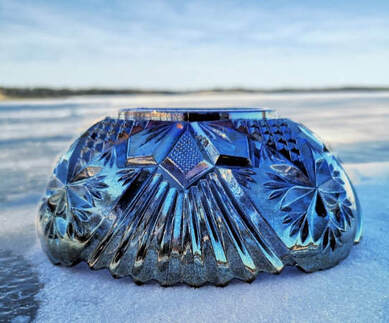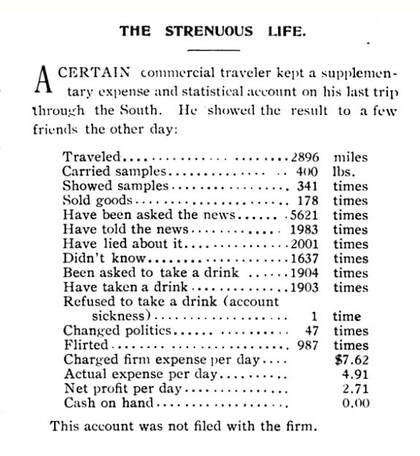NetworK ezine Issue 59. April 2020
Totally Devoted to Carnival Glass
Welcome to our fifty-ninth Carnival Network ezine.
Although we are in challenging times, it is uplifting to be able to come together as a glass community and share the thrill of Carnival. In this Issue, we take a rather different look at Imperial, and we reveal a new discovery in Finland. We also have free treat ... a "Taste" that might just tempt those of you in our worldwide audience who are unfamiliar with European Carnival to perhaps experience it in a fresh light.
Although we are in challenging times, it is uplifting to be able to come together as a glass community and share the thrill of Carnival. In this Issue, we take a rather different look at Imperial, and we reveal a new discovery in Finland. We also have free treat ... a "Taste" that might just tempt those of you in our worldwide audience who are unfamiliar with European Carnival to perhaps experience it in a fresh light.
|
Do you want “A Taste of European Carnival Glass”? Some of you may be unfamiliar with European Carnival. So, to give you a flavour of it, and to provide an introduction to the excitement and thrill of it all, we have written a free e-book called “A Taste of European Carnival Glass”. In it we show the beauty as well as … oh, instead of us trying to explain it, all you have to do is visit our website page and then simply download it, completely free. What’s not to love about that? Also New – “Update for Carnival Glass from Europe” One year ago, we released our ground-breaking e-book “Carnival Glass from Europe – A to Z Encyclopedia and Pattern Guide": a huge piece of work, almost 300 pages long, covering almost 800 patterns from around 50 makers. It was 18 years in the making, but our pioneering research into European Carnival continues. We are at the “cutting edge” of reporting new discoveries, which is why we promised to update the Encyclopedia when we had fresh information. The good news is that our first "Supplementary Update” is now available as a free e-book - 14 pages covering 43 pattern additions (new patterns or extra info on existing patterns), many of them fully illustrated. It provides a fully cross-referenced update for all of you who already have the first edition of the Encyclopedia e-book. If you don't have the Encyclopedia, why not download the Update anyway - for free- an additional treat alongside the "Taste" e-book? You can download from here: Free e-book |
Imperial in 1913: The best of times – the worst of times
1913 was both the best of times and the worst of times for Imperial in Bellaire, Ohio. Without question, the bad time came early in the year, in March, when the Ohio floods devastated the entire area. The impact of the flooding on Imperial was very significant, and it was reported that around 28,000 barrels of glass were submerged!
1913 was both the best of times and the worst of times for Imperial in Bellaire, Ohio. Without question, the bad time came early in the year, in March, when the Ohio floods devastated the entire area. The impact of the flooding on Imperial was very significant, and it was reported that around 28,000 barrels of glass were submerged!
Nevertheless, Imperial's owners were undaunted, working harder than ever before, and earning this very positive comment (below, left) from Charles Cox, of Cox & Lafferty, Imperial’s agent, in the “Crockery and Glass Journal” of October, 1913. Later the same month, the “Crockery and Glass Journal” further reported how busy Imperial was (see clip below, right).
|
Imperial turned around the difficulty and hardship that they had experienced earlier in the year, and made 1913 into their busiest and most productive to date.
So, what were they doing? The previous year, 1912, Imperial had launched their NUCUT range (and shortly afterwards, their NUART). The report on the right in the 1912 "Crockery and Glass Journal" perfectly describes one of their masterpieces of design: the Homestead plate, a wonderful example of which is shown below. Also in 1912 they had heavily promoted what they described as their “world-famous Iridescent glass novelties”. They were not necessarily "novelties" as we would call them today - they included everyday items such as a Poinsettia milk pitcher, an Imperial Hobstar table set, an Imperial Grape water set and goblet, and a wide selection of berries, nappies and comports. |
|
In 1913 Imperial went all out with a special catalogue supplement that featured their Carnival. Here’s what they wrote: “the sale of our iridescent goods goes on merrily while some other manufacturers have ceased to make this showy, popular priced ware, simply because they realized the superiority of our iridescent colors.” This was surely just marketing-speak, as Fenton, Northwood and Dugan-Diamond were all producing and promoting their Carnival – Millersburg however, had closed by then, due to financial difficulties. Imperial went on to feature six pages of Carnival in a wide range of shapes in Windmill, Double Dutch, Imperial Rose (they called it “American Beauty”) and the two NUART plates, Chrysanthemum and Homestead. An additional supplement in 1913 featured yet more Carnival, as did the main and very extensive catalogue for the year which boasted “more than 80 different iridescent” swung vases! (That figure must have been achieved by counting permutations of size and colour). A subtle change can be seen in the styles of patterns that began to emerge in 1913, as Imperial moved away from the geometrics and imitation “cut” patterns and introduced more naturalistic designs into their repertoire. The two NUART plates were described as being “Art goods in the real satin crizzled effects”. That “satin crizzled effect” surely describes the amazing, onion-skin, stretch effect that can be seen on both plates we show here. Although Imperial noted they could be used as cake plates, it was clear they were really intended for decoration, as they were made with "a rim on the back, which makes it possible to hang them on a wall, just like a china plaque". Note how the patterns illustrated in the Imperial Catalog Supplement (on the right) are the reverse of how they appear in the actual items. Imperial and later Summit Art Glass reissued/reproduced these Homestead and Chrysanthemum patterns using the old moulds for the fronts of the plates. The backs are different however: the Classic originals had a ribbed exterior, whereas the new ones have a plain or textured, stippled appearance, with the moulded IG / LIG / ALIG marks. Note also that the Summit pieces may also still have the Imperial marks. |
Extract from the February 1913 Imperial Supplement (to the 1912 catalogue) showing the Chrysanthemum and Homestead plates. Courtesy Jon D. Bartell.
|
|
Then ... a surprise!
And then we came across something that made us think. It was this Windmill bowl, in the 1913 catalogue. Just look at the edge! It has what is known to collectors as a 3 in 1 edge, a finishing touch that was often used by Fenton and Dugan-Diamond, as well as Millersburg. Previously, we believed that Imperial had not used this edge treatment on their old Classic Carnival. But undeniably, there it is – a 3 in 1 edge on a 9” berry. We knew for certain that Imperial used this edge treatment on Contemporary items dating from the 1960s on - such as this "IG" marked smoke Windmill bowl (shown far right), but not on their Classic Carnival pieces. |
Extract from the February 1913 Imperial Supplement (to the 1912 catalogue).
Courtesy Jon D. Bartell. |
An "IG" marked smoke Windmill bowl.
Courtesy of Seeck Auctions. |
We looked at our other Imperial catalogues and found a similar 3 in 1 edge on the Windmill bowl in a slightly later one, around 1915. But that was it. We did not see that edge shape illustrated in any other Imperial catalogues, and the Windmill 9” bowl was the only pattern/shape we saw it in.
So, the question we have for all our readers is this: do you have a 9” Windmill bowl with this 3 in 1 edge, that does not have an IG mark (or any similar mark)? The colour would be marigold, purple or helios. (We know that Smith made some red and maybe other Contemporary examples that were only marked with a paper label).
If you want to read more about Imperial's Carnival Glass - Classic and Contemporary, why not visit our Imperial Homepage? There's a whole lot of links to features, articles, newspaper reports, catalogues ... and yes, some stunning Carnival Glass pictures, all here: Imperial Carnival Glass.
|
Esa, made by Karhula, Finland One of the fascinating new discoveries that is set out in the “Update for Carnival Glass from Europe” free e-book, is this fascinating blue bowl, which was reported in our Network Facebook Group by Sarian Stade from Finland. This beautiful, blue bowl had not been reported previously and we are thrilled to be able to show you this wonderful photo by Sarian, taken on the frozen Lake Saimaa in Finland. You can read more about this pattern and see more illustrations in our recent supplement, the “Update for Carnival Glass from Europe” free e-book. |
And Finally for this Issue
We came across the snippet while perusing the 1913 Crockery and Glass Journal. It was a humorous “aside” that was clearly intended to amuse the readers. It certainly made us chuckle.
We came across the snippet while perusing the 1913 Crockery and Glass Journal. It was a humorous “aside” that was clearly intended to amuse the readers. It certainly made us chuckle.
Privacy and the use of your information: we only use your name and email address to send you your FREE Carnival Glass NetworK ezine. We will not share your name or email address with anyone else, or use it for any other purpose. You can change your mind about receiving your NetworK ezine at any time by clicking the unsubscribe link at the foot of every issue, or by emailing us at [email protected]
Join us on Facebook
We invite you and your friends to join us all on NetworK's fast growing and very active Facebook Group (link is below), and if you have missed any of the previous issues of NetworK and NetworK Specials, they are all here: Back Issues.
We invite you and your friends to join us all on NetworK's fast growing and very active Facebook Group (link is below), and if you have missed any of the previous issues of NetworK and NetworK Specials, they are all here: Back Issues.


















